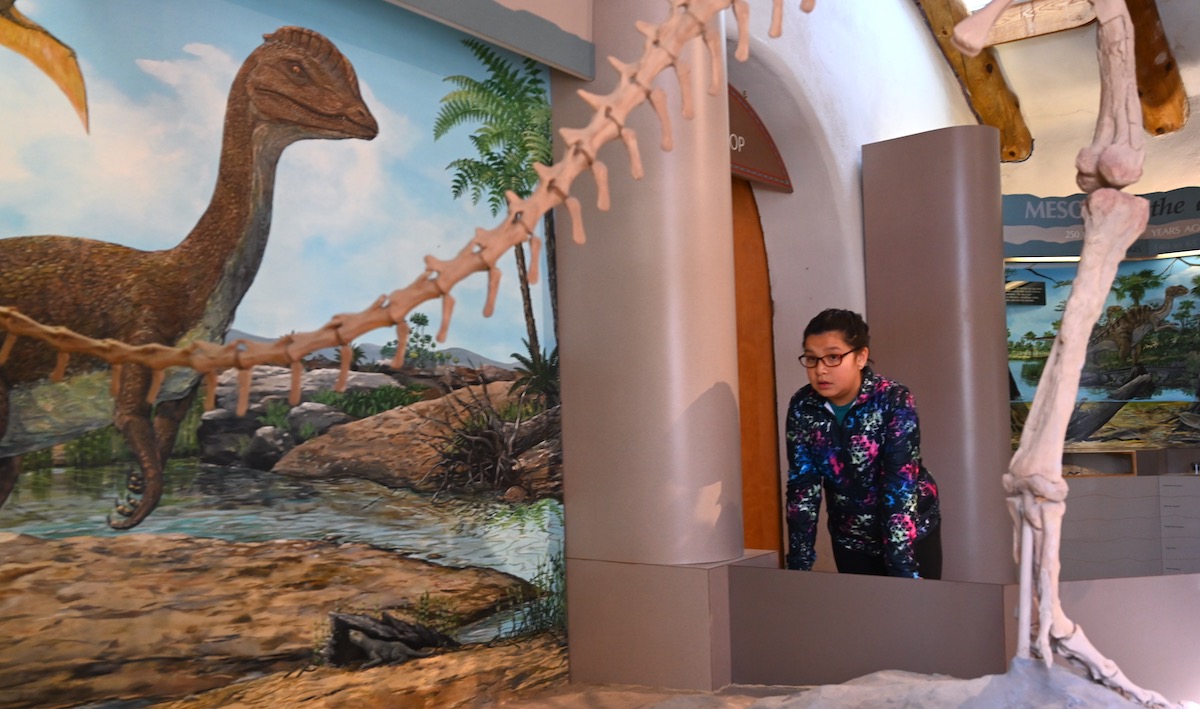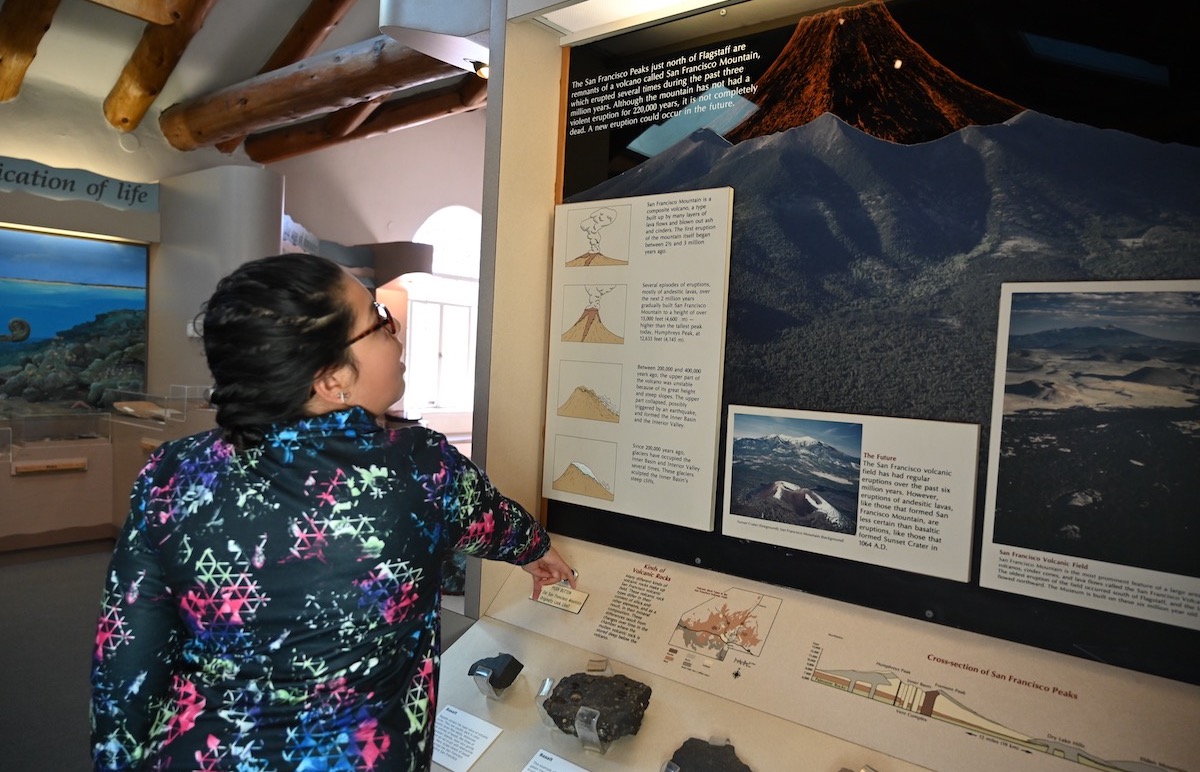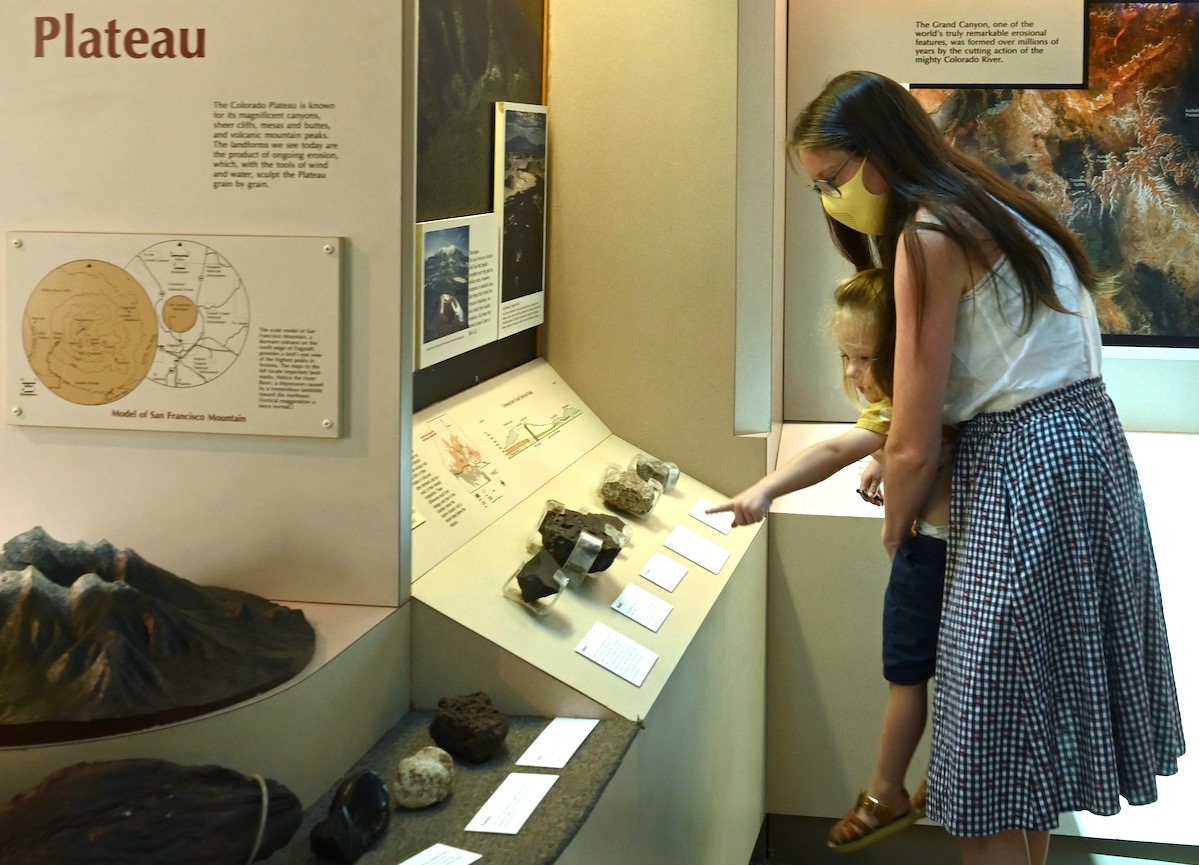
Within the geology gallery you will journey by mural through the major eras in the development of life on earth. As you follow time labels from the Precambrian to the Cenozoic eras, illustrations portray what geologists think the region may have been like, while bones and stones in the cases exhibit the clues geologists used to understand these ancient eras. You may recognize certain life forms. Some have changed very little through the eons, while others are now extinct, like the Dilophosaurus dinosaur whose cast skeleton dominates the room.
You can also see an artist’s rendition of the original 16,000-foot volcano that erupted to create the San Francisco Peak and pick of different types of rock created by the nearly 600 volcanoes in the region.
The Grand Canyon offers another window into geological history, as well as some of the most beautiful views on Earth. Researchers continue to study clues and try to determine the precise mechanisms that created this 277-mile- long canyon, which ranges from a less than a mile to 18 miles across. Rock at the bottom of the canyon, its oldest layer, was laid down 2 billion years ago. Water continues to erode the canyon floor, which drops 2000 feet between Lake Powell and Lake Mead. Today many rivers, large and small, join the Colorado River before the Canyon walls contain the flow.






